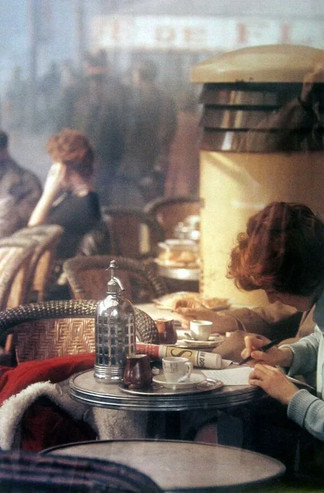Saul Leiter
- Marc Michelmann
- 6 days ago
- 2 min read
Saul Leiter (1923–2013) was an American photographer and painter, best known for his pioneering use of color in street photography and his poetic, painterly compositions that transformed ordinary city scenes into abstract works of art.
🕰️ Life Overview
Born: December 3, 1923, Pittsburgh, Pennsylvania, USA
Died: November 26, 2013, New York City, USA
Background: Son of a rabbi, initially studied to become one himself
Moved to New York: 1946, to pursue art — originally as a painter
Career: Worked quietly as a fashion photographer (for Harper’s Bazaar, Elle, Vogue) while shooting personal street photographs on his own time
Rediscovery: His work was largely unknown until the early 2000s, when it was revived through exhibitions and the book Early Color (2006)
📸 Type of Photography
Saul Leiter is best known for his color street photography in New York from the late 1940s to 1970s.
His style is distinct from the journalistic approach of contemporaries like Henri Cartier-Bresson or Robert Frank. Instead, his photography is lyrical, quiet, and painterly, often focused more on mood and abstraction than on narrative.
Hallmarks of his style:
Use of color film (Kodachrome) long before it was accepted in fine art
Abstract compositions using reflections, fogged windows, mirrors, and framing through glass or signage
Muted tones and painterly layering influenced by his painting background
Subjects often partially obscured — glimpsed through condensation, snow, or passing cars
A sense of loneliness and beauty in the everyday
He once said:
“I don’t have a philosophy. I have a camera.”
🌆 Famous Photographs & Series
“Through Boards” (1957)
A red umbrella and figures seen through slats of wooden boards — classic example of Leiter’s framing, layering, and color restraint.
“Snow” (1960)
Pedestrians and cars in a soft white snowfall on a New York street — cinematic, minimalist, and deeply atmospheric.
“Taxi Window” (1957)
A mysterious woman’s reflection caught through a rain-flecked taxi window — layers of color, glass, and ambiguity.
“Red Umbrella” (1958)
A simple but stunning composition dominated by a splash of red amid muted grays — one of his most reproduced images.
“Foot on El” (1954)
A cropped leg and foot stepping onto the elevated train — everyday gesture turned into a near-abstract study of geometry and motion.
“Through Window” (1950s)
A woman seen through a steamy café window, half-hidden by reflections — intimate, quiet, almost painterly.
📚 Key Books & Exhibitions
Early Color (2006) — introduced him to a global audience
Saul Leiter: Early Black and White (2014)
In My Room (2018) — more personal, intimate portraits
Exhibitions at Howard Greenberg Gallery (New York), Fondation Henri Cartier-Bresson (Paris), and The Photographer’s Gallery (London)
Featured in the acclaimed documentary “In No Great Hurry: 13 Lessons in Life with Saul Leiter” (2012)
🎨 Legacy
Saul Leiter’s work bridges street photography and fine art, blending the observational with the abstract.
He transformed mundane city moments into poetic visual harmonies, influencing generations of photographers — from Alex Webb to contemporary colorists like Harry Gruyaert.
Sources:



















































Comments